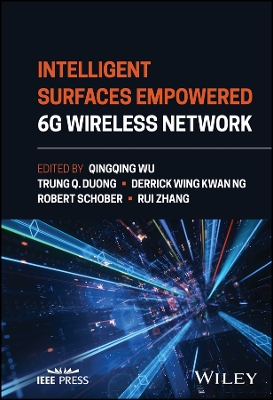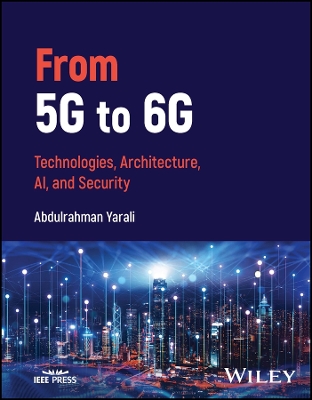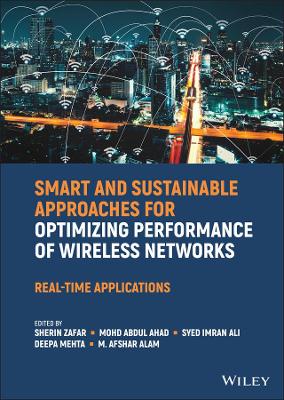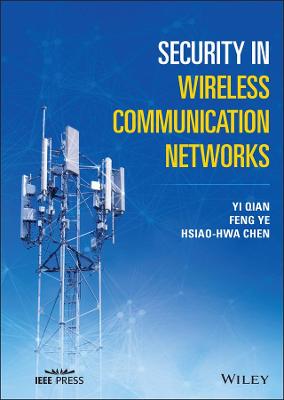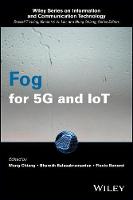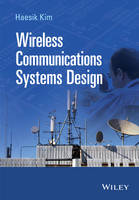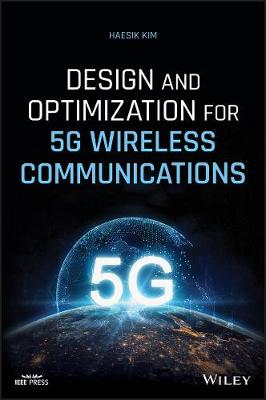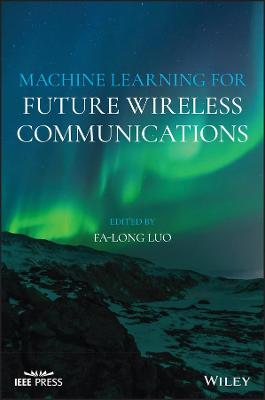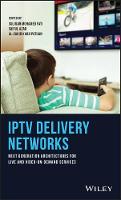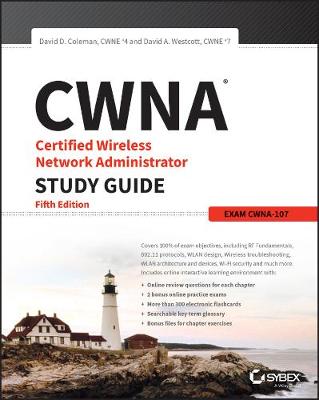5G and Beyond Wireless Communication Networks
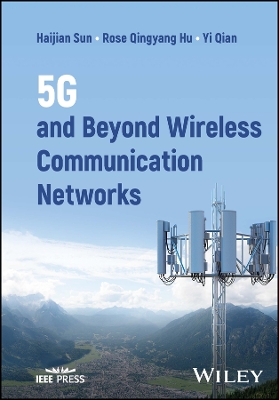 -15%
portes grátis
-15%
portes grátis
5G and Beyond Wireless Communication Networks
Sun, Haijian; Qian, Yi; Hu, Rose Qingyang
John Wiley & Sons Inc
09/2023
208
Dura
Inglês
9781119089452
15 a 20 dias
Preface xiii
Acknowledgments xv
1 Introduction to 5G and Beyond Network 1
1.1 5G and Beyond System Requirements 1
1.1.1 Technical Challenges 2
1.2 Enabling Technologies 3
1.2.1 5G New Radio 3
1.2.1.1 Non-orthogonal Multiple Access (NOMA) 3
1.2.1.2 Channel Codes 5
1.2.1.3 Massive MIMO 5
1.2.1.4 Other 5G NR Techniques 6
1.2.2 Mobile Edge Computing (MEC) 6
1.2.3 Hybrid and Heterogeneous Communication Architecture for Pervasive IoTs 7
1.3 Book Outline 8
2 5G Wireless Networks with Underlaid D2D Communications 11
2.1 Background 11
2.1.1 MU-MIMO 11
2.1.2 D2D Communication 11
2.1.3 MU-MIMO and D2D in 5G 12
2.2 NOMA-Aided Network with Underlaid D2D 12
2.3 NOMA with SIC and Problem Formation 14
2.3.1 NOMA with SIC 14
2.3.2 Problem Formation 15
2.4 Precoding and User Grouping Algorithm 15
2.4.1 Zero-Forcing Beamforming 16
2.4.1.1 First ZF Precoding 16
2.4.1.2 Second ZF Precoding 16
2.4.2 User Grouping and Optimal Power Allocation 16
2.4.2.1 First ZF Precoding 17
2.4.2.2 Second ZF Precoding 18
2.5 Numerical Results 18
2.6 Summary 19
3 5G NOMA-Enabled Wireless Networks 21
3.1 Background 21
3.2 Error Propagation in NOMA 22
3.3 SIC and Problem Formulation 22
3.3.1 SIC with Error Propagation 23
3.3.2 Problem Formation 24
3.4 Precoding and Power Allocation 25
3.4.1 Precoding Design 25
3.4.2 Case Studies for Power Allocation 26
3.4.2.1 Case I 26
3.4.2.2 Case II 27
3.5 Numerical Results 27
3.6 Summary 30
4 NOMA in Relay and IoT for 5G Wireless Networks 31
4.1 Outage Probability Study in a NOMA Relay System 31
4.1.1 Background 31
4.1.2 System Model 32
4.1.2.1 NOMA Cooperative Scheme 32
4.1.2.2 NOMA TDMA Scheme 34
4.1.3 Outage Probability Analysis 35
4.1.3.1 Outage Probability in NOMA Cooperative Scheme 35
4.1.4 Outage Probability in NOMA TDMA Scheme 36
4.1.5 Outage Probability with Error Propagation in SIC 37
4.1.5.1 Outage Probability in NOMA Cooperative Scheme with EP 38
4.1.5.2 Outage Probability in NOMA TDMA Scheme with EP 38
4.1.6 Numerical Results 39
4.2 NOMA in a mmWave-Based IoT Wireless System with SWIPT 41
4.2.1 Introduction 41
4.2.2 System Model 41
4.2.2.1 Phase 1 Transmission 42
4.2.2.2 Phase 2 Transmission 44
4.2.3 Outage Analysis 45
4.2.3.1 UE 1 Outage Probability 45
4.2.3.2 UE 2 Outage Probability 45
4.2.3.3 Outage at High SNR 47
4.2.3.4 Diversity Analysis for UE 2 47
4.2.4 Numerical Results 47
4.2.5 Summary 48
5 Robust Beamforming in NOMA Cognitive Radio Networks: Bounded CSI 51
5.1 Background 51
5.1.1 RelatedWork and Motivation 52
5.1.1.1 Linear EH Model 52
5.1.1.2 Non-linear EH Model 53
5.1.2 Contributions 53
5.2 System and Energy Harvesting Models 54
5.2.1 System Model 54
5.2.2 Non-linear EH Model 55
5.2.3 Bounded CSI Error Model 55
5.2.3.1 NOMA Transmission 56
5.3 Power Minimization-Based Problem Formulation 56
5.3.1 Problem Formulation 57
5.3.2 Matrix Decomposition 59
5.4 Maximum Harvested Energy Problem Formulation 60
5.4.1 Complexity Analysis 61
5.5 Numerical Results 62
5.5.1 Power Minimization Problem 62
5.5.2 Energy Harvesting Maximization Problem 64
5.6 Summary 67
6 Robust Beamforming in NOMA Cognitive Radio Networks: Gaussian CSI 69
6.1 Gaussian CSI Error Model 69
6.2 Power Minimization-Based Problem Formulation 69
6.2.1 Bernstein-Type Inequality I 70
6.2.2 Bernstein-Type Inequality II 71
6.3 Maximum Harvested Energy Problem Formulation 72
6.3.1 Complexity Analysis 73
6.4 Numerical Results 73
6.4.1 Power Minimization Problem 74
6.4.2 Energy Harvesting Maximization Problem 76
6.5 Summary 79
7 Mobile Edge Computing in 5G Wireless Networks 81
7.1 Background 81
7.2 System Model 82
7.2.1 Data Offloading 83
7.2.2 Local Computing 83
7.3 Problem Formulation 83
7.3.1 Update pk, tk, and fk 85
7.3.2 Update Lagrange Multipliers 86
7.3.3 Update Auxiliary Variables 86
7.3.4 Complexity Analysis 87
7.4 Numerical Results 87
7.5 Summary 90
8 Toward Green MEC Offloading with Security Enhancement 91
8.1 Background 91
8.2 System Model 92
8.2.1 Secure Offloading 92
8.2.2 Local Computing 93
8.2.3 Receiving Computed Results 93
8.2.4 Computation Efficiency in MEC Systems 93
8.3 Computation Efficiency Maximization with Active Eavesdropper 94
8.3.1 SCA-Based Optimization Algorithm 94
8.3.2 Objective Function 95
8.3.3 Proposed Solution to P4 with given (??, ??) 96
8.3.4 Update (??, ??) 97
8.4 Numerical Results 97
8.5 Summary 100
9 Wireless Systems for Distributed Machine Learning 101
9.1 Background 101
9.2 System Model 102
9.2.1 FL Model Update 102
9.2.2 Gradient Quantization 104
9.2.3 Gradient Sparsification 104
9.3 FL Model Update with Adaptive NOMA Transmission 104
9.3.1 Uplink NOMA Transmission 104
9.3.2 NOMA Scheduling 105
9.3.3 Adaptive Transmission 106
9.4 Scheduling and Power Optimization 107
9.4.1 Problem Formulation 107
9.5 Scheduling Algorithm and Power Allocation 108
9.5.1 Scheduling Graph Construction 108
9.5.2 Optimal scheduling Pattern 109
9.5.3 Power Allocation 110
9.6 Numerical Results 111
9.7 Summary 114
10 Secure Spectrum Sharing with Machine Learning: An Overview 115
10.1 Background 115
10.1.1 SS: A Brief History 116
10.1.2 Security Issues in SS 118
10.2 ML-Based Methodologies for SS 119
10.2.1 ML-Based CRN 119
10.2.1.1 Spectrum Sensing 120
10.2.1.2 Spectrum Selection 122
10.2.1.3 Spectrum Access 123
10.2.1.4 Spectrum Handoff 125
10.2.2 Database-Assisted SS 125
10.2.2.1 ML-Based EZ Optimization 126
10.2.2.2 Incumbent Detection 126
10.2.2.3 Channel Selection and Transaction 127
10.2.3 ML-Based LTE-U/LTE-LAA 127
10.2.3.1 ML-Based LBT Methods 128
10.2.3.2 ML-Based Duty Cycle Methods 129
10.2.3.3 Game-Theory-Based Methods 129
10.2.3.4 Distributed-Algorithm-Based Methods 130
10.2.4 Ambient Backscatter Networks 131
10.2.4.1 Information Extraction 131
10.2.4.2 Operating Mode Selection and User Coordination 132
10.2.4.3 AmBC-CR Methods 133
10.3 Summary 134
11 Secure Spectrum Sharing with Machine Learning: Methodologies 135
11.1 Security Concerns in SS 135
11.1.1 Primary User Emulation Attack 135
11.1.2 Spectrum Sensing Data Falsification Attack 135
11.1.3 Jamming Attacks 136
11.1.4 Intercept/Eavesdrop 137
11.1.5 Privacy Issues in Database-Assisted SS Systems 137
11.2 ML-Assisted Secure SS 138
11.2.1 State-of-the-Art Methods of Defense Against PUE Attack 138
11.2.1.1 ML-Based Detection Methods 138
11.2.1.2 Robust Detection Methods 140
11.2.1.3 ML-Based Attack Methods 141
11.2.2 State-of-the-Art Methods of Defense Against SSDF Attack 142
11.2.2.1 Outlier Detection Methods 143
11.2.2.2 Reputation-Based Detection Methods 143
11.2.2.3 SSDF and PUE Combination Attacks 144
11.2.3 State-of-the-Art Methods of Defense Against Jamming Attacks 144
11.2.3.1 ML-Based Anti-Jamming Methods 145
11.2.3.2 Attacker Enhanced Anti-Jamming Methods 146
11.2.3.3 AmBC Empowered Anti-Jamming Methods 148
11.2.4 State-of-the-Art Methods of Defense Against Intercept/Eavesdrop 149
11.2.4.1 RL-Based Anti-Eavesdropping Methods 149
11.2.5 State-of-the-Art ML-Based Privacy Protection Methods 150
11.2.5.1 Privacy Protection for PUs in SS Networks 150
11.2.5.2 Privacy Protection for SUs in SS Networks 151
11.2.5.3 Privacy Protection for ML Algorithms 151
11.3 Summary 153
12 Open Issues and Future Directions for 5G and Beyond Wireless Networks 155
12.1 Joint Communication and Sensing 155
12.2 Space-Air-Ground Communication 155
12.3 Semantic Communication 156
12.4 Data-Driven Communication System Design 156
Appendix A Proof of Theorem 5.1 157
Bibliography 161
Index 181
Preface xiii
Acknowledgments xv
1 Introduction to 5G and Beyond Network 1
1.1 5G and Beyond System Requirements 1
1.1.1 Technical Challenges 2
1.2 Enabling Technologies 3
1.2.1 5G New Radio 3
1.2.1.1 Non-orthogonal Multiple Access (NOMA) 3
1.2.1.2 Channel Codes 5
1.2.1.3 Massive MIMO 5
1.2.1.4 Other 5G NR Techniques 6
1.2.2 Mobile Edge Computing (MEC) 6
1.2.3 Hybrid and Heterogeneous Communication Architecture for Pervasive IoTs 7
1.3 Book Outline 8
2 5G Wireless Networks with Underlaid D2D Communications 11
2.1 Background 11
2.1.1 MU-MIMO 11
2.1.2 D2D Communication 11
2.1.3 MU-MIMO and D2D in 5G 12
2.2 NOMA-Aided Network with Underlaid D2D 12
2.3 NOMA with SIC and Problem Formation 14
2.3.1 NOMA with SIC 14
2.3.2 Problem Formation 15
2.4 Precoding and User Grouping Algorithm 15
2.4.1 Zero-Forcing Beamforming 16
2.4.1.1 First ZF Precoding 16
2.4.1.2 Second ZF Precoding 16
2.4.2 User Grouping and Optimal Power Allocation 16
2.4.2.1 First ZF Precoding 17
2.4.2.2 Second ZF Precoding 18
2.5 Numerical Results 18
2.6 Summary 19
3 5G NOMA-Enabled Wireless Networks 21
3.1 Background 21
3.2 Error Propagation in NOMA 22
3.3 SIC and Problem Formulation 22
3.3.1 SIC with Error Propagation 23
3.3.2 Problem Formation 24
3.4 Precoding and Power Allocation 25
3.4.1 Precoding Design 25
3.4.2 Case Studies for Power Allocation 26
3.4.2.1 Case I 26
3.4.2.2 Case II 27
3.5 Numerical Results 27
3.6 Summary 30
4 NOMA in Relay and IoT for 5G Wireless Networks 31
4.1 Outage Probability Study in a NOMA Relay System 31
4.1.1 Background 31
4.1.2 System Model 32
4.1.2.1 NOMA Cooperative Scheme 32
4.1.2.2 NOMA TDMA Scheme 34
4.1.3 Outage Probability Analysis 35
4.1.3.1 Outage Probability in NOMA Cooperative Scheme 35
4.1.4 Outage Probability in NOMA TDMA Scheme 36
4.1.5 Outage Probability with Error Propagation in SIC 37
4.1.5.1 Outage Probability in NOMA Cooperative Scheme with EP 38
4.1.5.2 Outage Probability in NOMA TDMA Scheme with EP 38
4.1.6 Numerical Results 39
4.2 NOMA in a mmWave-Based IoT Wireless System with SWIPT 41
4.2.1 Introduction 41
4.2.2 System Model 41
4.2.2.1 Phase 1 Transmission 42
4.2.2.2 Phase 2 Transmission 44
4.2.3 Outage Analysis 45
4.2.3.1 UE 1 Outage Probability 45
4.2.3.2 UE 2 Outage Probability 45
4.2.3.3 Outage at High SNR 47
4.2.3.4 Diversity Analysis for UE 2 47
4.2.4 Numerical Results 47
4.2.5 Summary 48
5 Robust Beamforming in NOMA Cognitive Radio Networks: Bounded CSI 51
5.1 Background 51
5.1.1 RelatedWork and Motivation 52
5.1.1.1 Linear EH Model 52
5.1.1.2 Non-linear EH Model 53
5.1.2 Contributions 53
5.2 System and Energy Harvesting Models 54
5.2.1 System Model 54
5.2.2 Non-linear EH Model 55
5.2.3 Bounded CSI Error Model 55
5.2.3.1 NOMA Transmission 56
5.3 Power Minimization-Based Problem Formulation 56
5.3.1 Problem Formulation 57
5.3.2 Matrix Decomposition 59
5.4 Maximum Harvested Energy Problem Formulation 60
5.4.1 Complexity Analysis 61
5.5 Numerical Results 62
5.5.1 Power Minimization Problem 62
5.5.2 Energy Harvesting Maximization Problem 64
5.6 Summary 67
6 Robust Beamforming in NOMA Cognitive Radio Networks: Gaussian CSI 69
6.1 Gaussian CSI Error Model 69
6.2 Power Minimization-Based Problem Formulation 69
6.2.1 Bernstein-Type Inequality I 70
6.2.2 Bernstein-Type Inequality II 71
6.3 Maximum Harvested Energy Problem Formulation 72
6.3.1 Complexity Analysis 73
6.4 Numerical Results 73
6.4.1 Power Minimization Problem 74
6.4.2 Energy Harvesting Maximization Problem 76
6.5 Summary 79
7 Mobile Edge Computing in 5G Wireless Networks 81
7.1 Background 81
7.2 System Model 82
7.2.1 Data Offloading 83
7.2.2 Local Computing 83
7.3 Problem Formulation 83
7.3.1 Update pk, tk, and fk 85
7.3.2 Update Lagrange Multipliers 86
7.3.3 Update Auxiliary Variables 86
7.3.4 Complexity Analysis 87
7.4 Numerical Results 87
7.5 Summary 90
8 Toward Green MEC Offloading with Security Enhancement 91
8.1 Background 91
8.2 System Model 92
8.2.1 Secure Offloading 92
8.2.2 Local Computing 93
8.2.3 Receiving Computed Results 93
8.2.4 Computation Efficiency in MEC Systems 93
8.3 Computation Efficiency Maximization with Active Eavesdropper 94
8.3.1 SCA-Based Optimization Algorithm 94
8.3.2 Objective Function 95
8.3.3 Proposed Solution to P4 with given (??, ??) 96
8.3.4 Update (??, ??) 97
8.4 Numerical Results 97
8.5 Summary 100
9 Wireless Systems for Distributed Machine Learning 101
9.1 Background 101
9.2 System Model 102
9.2.1 FL Model Update 102
9.2.2 Gradient Quantization 104
9.2.3 Gradient Sparsification 104
9.3 FL Model Update with Adaptive NOMA Transmission 104
9.3.1 Uplink NOMA Transmission 104
9.3.2 NOMA Scheduling 105
9.3.3 Adaptive Transmission 106
9.4 Scheduling and Power Optimization 107
9.4.1 Problem Formulation 107
9.5 Scheduling Algorithm and Power Allocation 108
9.5.1 Scheduling Graph Construction 108
9.5.2 Optimal scheduling Pattern 109
9.5.3 Power Allocation 110
9.6 Numerical Results 111
9.7 Summary 114
10 Secure Spectrum Sharing with Machine Learning: An Overview 115
10.1 Background 115
10.1.1 SS: A Brief History 116
10.1.2 Security Issues in SS 118
10.2 ML-Based Methodologies for SS 119
10.2.1 ML-Based CRN 119
10.2.1.1 Spectrum Sensing 120
10.2.1.2 Spectrum Selection 122
10.2.1.3 Spectrum Access 123
10.2.1.4 Spectrum Handoff 125
10.2.2 Database-Assisted SS 125
10.2.2.1 ML-Based EZ Optimization 126
10.2.2.2 Incumbent Detection 126
10.2.2.3 Channel Selection and Transaction 127
10.2.3 ML-Based LTE-U/LTE-LAA 127
10.2.3.1 ML-Based LBT Methods 128
10.2.3.2 ML-Based Duty Cycle Methods 129
10.2.3.3 Game-Theory-Based Methods 129
10.2.3.4 Distributed-Algorithm-Based Methods 130
10.2.4 Ambient Backscatter Networks 131
10.2.4.1 Information Extraction 131
10.2.4.2 Operating Mode Selection and User Coordination 132
10.2.4.3 AmBC-CR Methods 133
10.3 Summary 134
11 Secure Spectrum Sharing with Machine Learning: Methodologies 135
11.1 Security Concerns in SS 135
11.1.1 Primary User Emulation Attack 135
11.1.2 Spectrum Sensing Data Falsification Attack 135
11.1.3 Jamming Attacks 136
11.1.4 Intercept/Eavesdrop 137
11.1.5 Privacy Issues in Database-Assisted SS Systems 137
11.2 ML-Assisted Secure SS 138
11.2.1 State-of-the-Art Methods of Defense Against PUE Attack 138
11.2.1.1 ML-Based Detection Methods 138
11.2.1.2 Robust Detection Methods 140
11.2.1.3 ML-Based Attack Methods 141
11.2.2 State-of-the-Art Methods of Defense Against SSDF Attack 142
11.2.2.1 Outlier Detection Methods 143
11.2.2.2 Reputation-Based Detection Methods 143
11.2.2.3 SSDF and PUE Combination Attacks 144
11.2.3 State-of-the-Art Methods of Defense Against Jamming Attacks 144
11.2.3.1 ML-Based Anti-Jamming Methods 145
11.2.3.2 Attacker Enhanced Anti-Jamming Methods 146
11.2.3.3 AmBC Empowered Anti-Jamming Methods 148
11.2.4 State-of-the-Art Methods of Defense Against Intercept/Eavesdrop 149
11.2.4.1 RL-Based Anti-Eavesdropping Methods 149
11.2.5 State-of-the-Art ML-Based Privacy Protection Methods 150
11.2.5.1 Privacy Protection for PUs in SS Networks 150
11.2.5.2 Privacy Protection for SUs in SS Networks 151
11.2.5.3 Privacy Protection for ML Algorithms 151
11.3 Summary 153
12 Open Issues and Future Directions for 5G and Beyond Wireless Networks 155
12.1 Joint Communication and Sensing 155
12.2 Space-Air-Ground Communication 155
12.3 Semantic Communication 156
12.4 Data-Driven Communication System Design 156
Appendix A Proof of Theorem 5.1 157
Bibliography 161
Index 181


